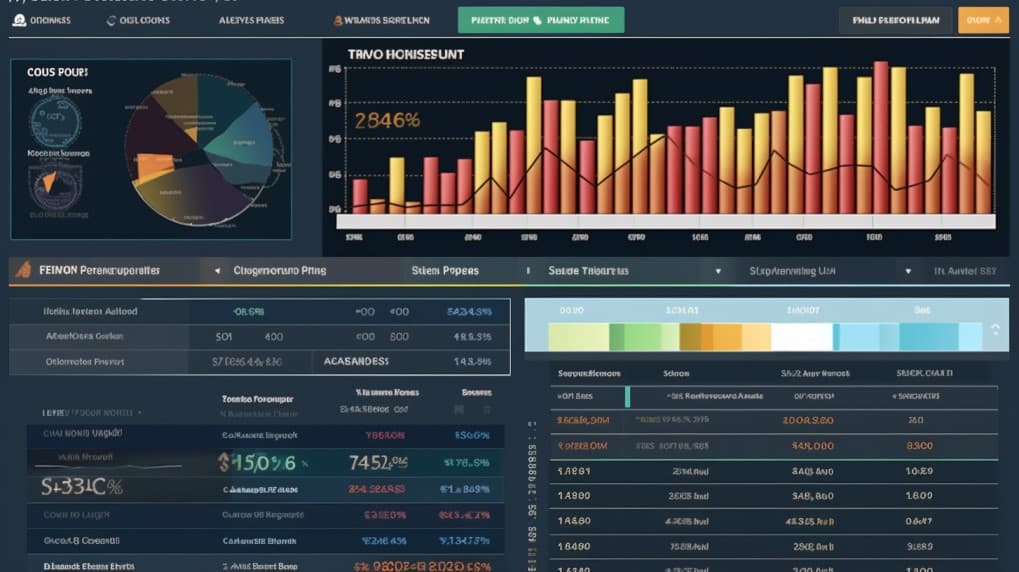
VHT VS FHLC
Exchange-Traded Funds (ETFs) have transformed the landscape of modern investing, offering a convenient and diversified way to gain exposure to various sectors and asset classes. In this article, we will conduct an in-depth analysis of two prominent ETFs: VHT (Vanguard Health Care ETF) and FHLC (Fidelity MSCI Health Care Index ETF). Through a comprehensive exploration of their ETF tickers, full names, issuers, sectors, top holdings, capitalization, strategies, tracking methods, and exposure, we aim to provide valuable insights for investors seeking to navigate the health care sector.
VHT Vs FHLC: Overview
VHT and FHLC represent two distinct approaches to investing within the health care industry. While both ETFs focus on the health care sector, their underlying strategies and methodologies differ. VHT aims to track an index of health care stocks, whereas FHLC seeks to replicate the performance of the MSCI USA IMI Health Care Index. Let's delve deeper into their differences and nuances.
VHT Vs FHLC: Sectors and Top Holdings
The VHT ETF is centered on providing exposure to various health care-related industries, including pharmaceuticals, biotechnology, and medical equipment. Top holdings in VHT often include giants like Johnson & Johnson, Pfizer, and UnitedHealth Group. In contrast, FHLC's portfolio mirrors a broader selection of companies within the health care sector, allowing investors to access a diverse range of sub-industries and companies that play vital roles in the health care ecosystem.
 VHT overlap VHT VS FHLC
VHT overlap VHT VS FHLC
VHT Vs FHLC: Capitalization and Strategy
When it comes to capitalization, VHT and FHLC differ in their asset under management (AUM) sizes, which can impact their liquidity and investor preferences. VHT's strategy centers on tracking the performance of the MSCI US Investable Market Health Care 25/50 Index, while FHLC seeks to closely replicate the MSCI USA IMI Health Care Index. These distinctions in strategy can influence the funds' performance trajectories and risk profiles.
VHT Vs FHLC: Tracking and Exposure
VHT and FHLC employ different tracking methodologies to achieve their investment objectives. VHT uses a full-replication approach, meaning it aims to own all the securities in the index it tracks. This approach can offer investors a high degree of accuracy in tracking the index's performance but may also lead to higher turnover and associated costs. FHLC, on the other hand, employs a sampling approach, investing in a representative sample of securities from the index. This can lead to lower turnover and potentially reduced tracking error.
Conclusion
In the ever-evolving landscape of financial markets, choosing the right ETF to align with your investment goals requires a thorough understanding of the underlying assets, strategies, and risks. VHT and FHLC exemplify this diversity within the health care sector, catering to different preferences and risk appetites. For investors seeking to delve deeper into the intricacies of these ETFs, ETF Insider stands as an invaluable tool. This user-friendly app provides a wealth of insights, including holdings analysis, correlations, overlaps, and other critical information that aids in informed decision-making.
Disclaimer: This article does not offer investment advisory services. It is essential to conduct thorough research and consult with financial professionals before making any investment decisions.
Sources:
Vanguard Health Care ETF (VHT) Fact Sheet. Vanguard. [Link]
Fidelity MSCI Health Care Index ETF (FHLC) Overview. Fidelity. [Link]
VHT quote and analysis
Discover the top holdings, correlations, and overlaps of ETFs using our visualization tool.
Our app allows you to build and track your portfolio.
To learn more about the VHT Vanguard Health Care ETF, access our dedicated page now.
FAQ
Why is VHT better than FHLC?
VHT may be considered better than FHLC for some investors due to its specific focus, offering diversification.
Does FHLC beat VHT?
FHLC's performance relative to VHT will vary over time, depending on market conditions.
Should I invest in VHT or FHLC?
The choice between VHT and FHLC should align with your investment goals, risk tolerance, and desired exposure.
Are VHT and FHLC good investments?
Both VHT and FHLC can be suitable investments depending on individual investment strategies, goals, and risk profiles.
What is the correlation between VHT and FHLC?
The correlation between VHT and FHLC can vary over time, reflecting differences in performance.